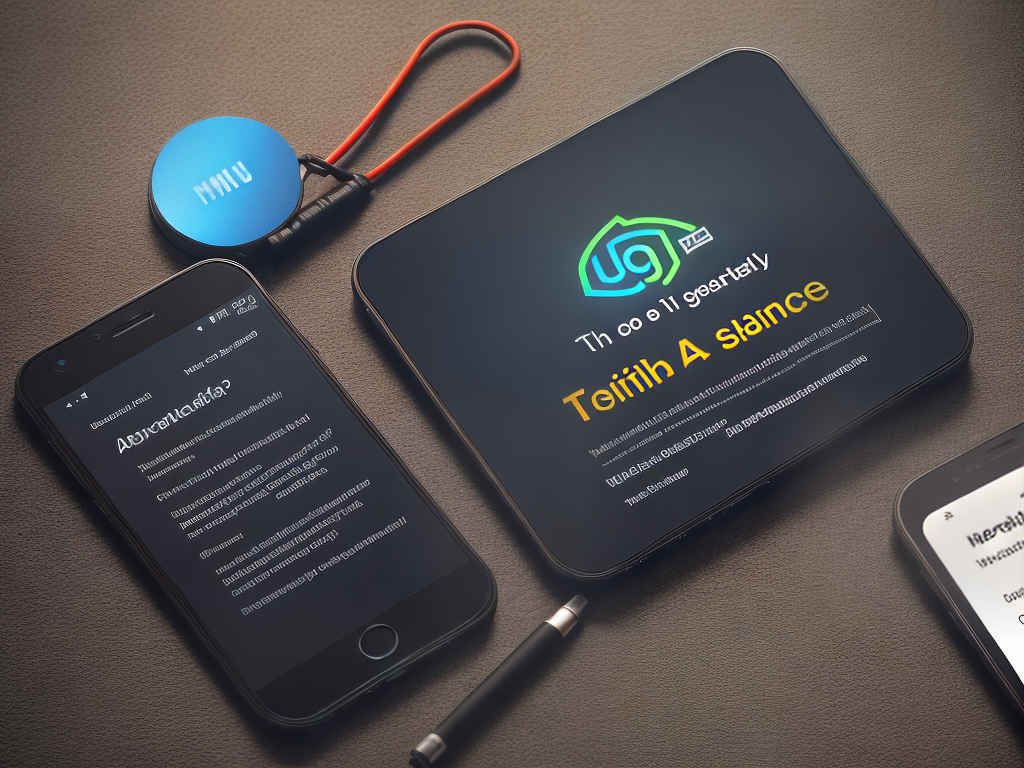Hey everyone, if you’re looking for the best SEO tips for mobile websites then you’ve come to the right place! It can be daunting trying to make sure your website is optimized for both desktop and mobile users – but don’t worry, I’m here to help.
With a few simple steps, you’ll have your mobile website up-to-date with all of the latest SEO tactics in no time. So let’s get started!
In this article, I’m going to share my top SEO tips designed specifically for mobile websites. Whether you’re just getting into SEO or are an experienced pro, there’s something here for everyone – so keep reading and learn how to maximize your site’s potential with these power moves!
Optimize Your Page Speed
Time has flown by and, believe it or not, mobile website optimization is no longer a nice-to-have – it’s an absolute must. Mobile users expect fast loading times and if you fail to deliver your site speed will be remembered as much as that one time at school when everyone laughed at you!
So what do you need to know? Let’s dive into optimizing page speed for mobile websites.
To get started, the first step should always be carrying out an audit of the page speed on both desktop and mobile devices. This can easily be done using Google PageSpeed Insights which provides invaluable insight into how quickly your website loads in various browsers and devices.
You’ll also want to take advantage of caching techniques such as enabling Gzip compression and browser caching to ensure that resources are served faster from the server side while simultaneously decreasing data usage.
Furthermore, make sure to optimize images where possible – reducing image size without compromising quality will go a long way towards speeding up your website load time. Also try minifying HTML/CSS files so they don’t contain any unnecessary characters or spaces; this helps reduce file sizes significantly resulting in increased load speeds too.
Lastly, consider leveraging content delivery networks (CDNs) which store static content in multiple locations across different servers throughout the world in order to provide users with faster access speeds regardless of their geographical location.
With these steps taken care of you’re well on your way to providing visitors with lightning quick page speeds! Onwards now to responsive web design…
Use Responsive Web Design
Now that you’ve optimized your page speed, it’s time to look at the design of your mobile website. For a great user experience across multiple devices and platforms, responsive web design is essential.
Here are three tips for implementing this successfully:
-
Start with the fundamentals – ensure all core components work well on any device by testing basic elements such as headlines, images, links and buttons.
-
Use flexible grids – create different layouts based on specific breakpoints so they display correctly on desktop computers, tablets and smartphones.
-
Invest in media queries – set up rules which respond to the browser’s width or other parameters when displaying content; these can be used to make adjustments such as text size, column layout and image scaling.
The above steps will help you create an optimal viewing experience for every user no matter what type of device they’re using.
To truly take advantage of today’s mobile search landscape though, you need to leverage AMP technology (Accelerated Mobile Pages).
Leverage Amp Technology
I’m sure you’ve heard of Google’s Accelerated Mobile Pages (AMP) technology. It helps create lightning fast mobile websites that are optimized for search engine rankings by allowing easier and quicker loading times.
This means that your website can be found more quickly in searches, making it a great way to boost SEO efforts on your site.
When implemented correctly, AMP ensures maximum performance throughout the user experience by reducing page size and increasing load speed. Not only does this make your website faster, but it also keeps visitors from getting frustrated with slow loading pages or leaving before they even get there.
As a result, you’ll see better engagement rates and improved conversions on the back-end of things too!
It’s not just about optimizing for search engines either. With AMP installed into your mobile website, users will be able to browse content more easily no matter what device they’re using since everything is designed to fit perfectly on any screen size.
Plus, many popular publishers have already adopted AMP as their go-to platform for delivering news stories – so if you want to stay competitive then leveraging AMP technology should definitely be something worth considering.
In other words, AMP puts mobile websites at an advantage when it comes to creating engaging experiences while still ensuring optimal performance across all devices.
The best part? There’s really no excuse not to give it a try – after all, Google offers free tools that allow developers to incorporate AMP into existing sites without having to do much work at all!
Now let’s move onto how we can focus on content optimization…
Focus On Content Optimization
Now that you’ve leveraged AMP technology for your mobile website, it’s time to take a look at content optimization.
Content is one of the most important aspects of SEO and can be the difference between success and failure when it comes to ranking on search engine results pages (SERPs). To ensure your content is optimized properly, focus on making sure each page contains relevant keywords, informative title tags, meta descriptions, alt text descriptions for images, and any other applicable information that will help boost rankings.
In addition to including keyword-rich content in all areas of your website, make sure to also optimize the structure of your site as well. Ensure titles are concise yet descriptive; use headings effectively to break up large chunks of copy into smaller pieces; create internal links within the content to related pages or posts; and keep paragraphs short with no more than five sentences per paragraph.
All these steps will not only improve readability but also provide better opportunities for indexation by search engines.
When creating new content or revising existing material, always put yourself in the shoes of someone who has never seen your website before. Ask questions such as ‘Does this article directly answer their query?’, ‘Is there enough supporting evidence?’ and ‘Will readers find value here?’. If you’re able to confidently answer yes to those questions then chances are you have created quality content that users want to engage with.
To further increase visibility on SERPs strive to produce fresh content regularly whether it’s blog posts, infographics or videos – anything that adds value while helping establish authority within an industry. This type of material will not only drive more organic traffic but also retain current visitors through continual updates and interesting reads which leads us nicely onto our next point: choosing the right keywords…
Choose The Right Keywords
Choosing the right keywords for your mobile website is essential.
I’m talking about those words and phrases that you want to appear in search engine queries when people are looking for what you have to offer.
To make sure your site can be found, take the time to research which terms are popularly used by potential customers. Use a keyword tool such as Google Adwords or SEMrush to uncover the most effective options – there’s no point focusing on obscure phrases if they don’t relate to what people actually want!
Consider also how competitive each term is; go for ones with low competition yet high results.
Once you’re happy with your selection, incorporate them into all aspects of your content including titles, headings, meta data and page descriptions.
These will all help ensure that search engines pick up on who you are and what services you provide.
In addition, structure your text so that it includes targeted keywords throughout; this helps boost rankings further and makes it easier for users to find relevant information quickly.
Remember not to overuse any keyword though; stuffing too many into one piece of content won’t do anything other than put off readers and risk penalization from search engines like Google.
Instead focus on quality over quantity: create engaging copy that draws visitors in and is easy to read while using enough key terms every now and then without going overboard.
It’s worth taking the time here because getting SEO-friendly language just right can really help drive traffic towards your site!
Having done this groundwork, it’s time to move onto structured data: an aspect of SEO designed specifically for web pages accessed via mobile devices…
Include Structured Data
If you thought the first step of SEO was easy, buckle up for this next one! It’s time to include structured data on your mobile website… and if I’m being completely honest with you, it isn’t exactly a walk in the park.
Structured data is like a secret language between search engines and websites that speak to each other. But don’t worry; once you understand what it’s all about, adding it will be as simple as sending an email or writing a postcard.
Structured data is code that helps crawlers classify content found within HTML tags. So when they come across certain tags, they can interpret them correctly. This allows crawlers to accurately determine things like titles, descriptions, images, and more – which are all essential elements of any good SEO strategy.
And because these elements are often hidden from view (like page titles), using structured data ensures that everything is indexed properly by search engine bots.
But here’s where it gets tricky: not only do you need to know how to read and write structured data, but also how to use it effectively in order to maximize its potential benefits for ranking purposes. That means knowing which types of codes work best for particular pieces of information on your website – such as Schema Markup for product details or Open Graph Tags for social media sharing links –and using those codes strategically throughout your site’s pages.
The key here is understanding how different kinds of coding affect crawling performance so that you can optimize accordingly.
The bottom line? To ensure your mobile website ranks well in today’s competitive landscape, make sure your site is equipped with accurate and updated structured data – otherwise you could miss out on crucial opportunities for visibility and engagement!
As we move into our next section about making sure your site is mobile-friendly, keep this tip in mind — no matter how great the design looks on desktop devices, without optimized code behind it, your efforts could go unnoticed by search engines.
Make Sure Your Site Is Mobile-Friendly
Making sure your site is mobile friendly has become incredibly important in the world of SEO. Having a website that’s optimized for smartphones, tablets and other devices can make all the difference when it comes to driving organic traffic.
Here are some key steps you should take:
-
Use Responsive Design: If your website isn’t responsive, chances are it won’t look great on different sized screens. Make sure you use a design that will scale properly no matter what device someone uses to view your content.
-
Optimize Load Times: Mobile users expect websites to load quickly, so make sure yours does by optimizing images, compressing files and utilizing caching whenever possible.
-
Prioritize Content Above Fold: Ensure that all essential elements – such as menus, logos and call-to-action buttons – appear above ‘the fold’ so users don’t have to scroll down too far before they find what they’re looking for.
-
Develop an App: Creating an app that complements your mobile website can be an effective way of engaging with mobile users while increasing engagement and brand loyalty at the same time.
These tips will help ensure that your website looks great no matter what device people view it on and also optimize its performance for better search engine rankings. By following these guidelines, you’ll give yourself the best chance of success when trying to attract visitors from mobile devices.
Now let’s move on and explore how we can utilize mobile image optimization to get even more out of our sites!
Utilize Mobile Image Optimization
The importance of mobile-friendly websites cannot be overstated. It is the key to making sure your website visitors have a great experience — regardless of what device they are using to access it.
But if you really want to take things up a notch, then it’s time to utilize mobile image optimization.
Mobile image optimization can make or break any site that wants to remain competitive in this day and age. With ever-increasing smartphone usage, page loading speed has become an even bigger priority for businesses across all industries.
Mobile users expect fast performance, so optimizing images on your website should definitely be part of your strategy.
Image optimization involves reducing their file size while preserving quality as much as possible. This means compressing images without affecting their visual appeal so they will load faster on smaller devices with limited bandwidth capabilities.
There are several tools available that can help you get started quickly and easily — such as TinyPNG or Compressor — but you also need to pay attention to other factors like resolution and format when optimizing images for different screen sizes and devices.
By taking the necessary steps towards improving mobile image performance, you’ll soon start seeing better user engagement metrics which could result in more conversions from your target audience.
And once again, by giving people the best possible experience when visiting your site, you’re ensuring its success in the long run! So don’t delay – optimize those images today for maximum impact tomorrow!
Prioritize Mobile-Friendly Urls
When it comes to optimizing your mobile website, prioritizing mobile-friendly URLs should be at the top of your list. This means ensuring that all links redirect properly from desktop and tablet websites over to your mobile site. By doing this, you’ll ensure that users can navigate easily between pages on their phones without any hiccups or confusion along the way.
It’s important to note that in addition to link redirection, you also want to pay attention to page loading speed when dealing with URLs for a mobile website. Slow-loading pages are frustrating and can cause visitors to click away instead of engaging with content on your website – something no business owner wants! To avoid this problem, make sure images and other files used within a URL remain optimized so they load quickly and efficiently on smaller devices.
Furthermore, keep an eye out for potential errors like broken links or 404 messages which could result in users being unable to access certain areas of your website while using a smartphone. As soon as these issues arise, take time to troubleshoot them and restore normal functioning before further damage is done.
By following these practices related to mobile-friendly URLs, you’ll help create an optimal experience for those accessing your website through handheld devices.
Moving forward then, it’s equally important to analyze how well the site performs once these changes have been made.
Analyze Your Site’S Performance
No doubt, having a mobile-friendly URL is important for SEO. But what good is it if your website isn’t performing as well as you’d like?
That’s why analyzing the performance of your site should be a top priority when optimizing for SEO on mobile devices. The good news is that there are lots of tools out there which can help you do this.
From basic data analysis to sophisticated traffic tracking software, these solutions will give you an in-depth look at how effectively your pages and posts are being seen by potential customers or fans. Plus, some even offer suggestions about ways to improve your content so it stands out more!
But before delving into any analytical tool, make sure to get familiar with Google’s Mobile-Friendly Test and PageSpeed Insights report. These two components provide valuable insight into how friendly your site actually is towards different types of mobile users, from screen size optimization to page loading speed times.
Understanding where things stand allows you to quickly identify areas that need attention and prioritize them accordingly. Once all the basics have been taken care of, now comes the time to take things up a notch – optimize for voice search!
By understanding the way people speak compared to type – keywords become phrases rather than single words – you’ll be able to craft content that caters specifically to vocal commands made via devices such as Alexa or Siri. This means using natural language instead of keyword stuffing and focusing more on long tail queries related to common questions asked within your field of expertise.
Ready for the next step? Let’s dive right in!
Optimize For Voice Search
Using voice search has become an increasingly popular way to find what you’re looking for on the web. With more than half of all searches now being done by voice, optimizing your website and content for voice search should be a priority if you want your site to rank higher in search engine results pages (SERPs).
To optimize for voice search, first make sure that your website is mobile-friendly. Next, incorporate natural language into page titles and meta descriptions so they sound as close to how someone would ask a question out loud when using a virtual assistant like Siri or Alexa. Additionally, include structured data such as schema markup whenever possible since it helps search engines understand what type of information can be found on your webpages.
Finally, focus on long tail keywords that account for conversational queries which are often longer and more specific than those used with text based searches. This will help ensure that the content you produce is relevant to the questions people are asking via their devices. By following these tips, you’ll increase the chances of showing up at the top of SERP rankings when users query related topics by voice.
The next step is to implement accelerated mobile pages (AMP). AMP pages are stripped down versions of traditional HTML websites designed specifically for smartphones; they load much faster than regular webpages due to reduced coding requirements and lighter design elements like images and videos being cached prior to display. Search engine crawlers also prioritize AMP sites over non-AMP ones because faster loading times result in better user experiences overall – something Google takes quite seriously when determining SERP rankings.
Implement Accelerated Mobile Pages
Voice search has taken the world by storm. According to Google, 20% of all searches on its mobile app and Android devices are voice searches! This is a trend that isn’t going away anytime soon. In order to keep up with this new technology, businesses must optimize their website for voice search queries.
However, there’s another way to make sure your website stands out from the competition: implementing Accelerated Mobile Pages (AMP). AMP pages can help speed up loading times for webpages on mobile devices by using less code and streamlined resources. While optimized for speed, these pages also offer numerous other benefits such as higher click-through rates and better rankings in SERPs:
-
Improved Visitor Engagement – AMP pages have been known to increase visitor engagement because they load faster than regular HTML pages. People tend to stay longer when websites load quickly, which means more time spent on your website.
-
Higher Click Through Rates – With accelerated loading speeds comes an increased number of clicks due to visitors not having to wait around for content or images to load before clicking through them. Additionally, Google rewards sites with higher CTRs with higher ranking positions so it pays off in both user experience and SEO performance.
-
Better Rankings in SERPs – Websites utilizing AMP will see improved visibility across different platforms since Google displays AMP results first in its SERP listings. This allows you to stand out from the crowd and gain more organic traffic without additional optimization techniques like link building or keyword research.
These three benefits show just how important AMP implementation is if you want your site to be successful on mobile devices. It’s essential that business owners understand these advantages so they can take advantage of this technology sooner rather than later.
Nowadays, users expect fast page loads no matter what device they’re accessing a page from—so don’t let them down! To ensure your site is secure and running smoothly, focus on making sure your server is properly configured and updated regularly…
Make Sure Your Site Is Secure
Making sure your site is secure should be a top priority when optimizing for mobile users. It’s important to ensure that any sensitive data on the website, such as credit card information or user credentials, is encrypted before being submitted over the internet. This will help protect you and your customers from hackers who are looking to access confidential data.
Additionally, make sure that all software running on the site is up-to-date with regular patches and security updates so it can remain secure against potential threats.
You also need to pay attention to how your site handles redirects and URLs since these are key components of an effective SEO strategy. Ensure that any page redirects properly forward visitors to their intended destination without leading them astray and making them confused about where they’re going. Also verify that every URL has been optimized according to best practices and includes relevant keywords in order to rank higher in search engine results pages (SERPs).
Another factor to consider is ensuring compatibility across different browsers and devices. Make sure your website looks great no matter which device — desktop computer, laptop, tablet or smartphone — someone uses to view it. Test out each version separately so you know exactly what people will see when they visit your website regardless of the browser or device they’re using. This helps give you control over how well your content performs across all platforms while keeping users engaged at the same time.
Lastly, use appropriate caching techniques wherever possible as this can significantly improve loading times on mobile devices by storing files locally instead of downloading them multiple times from the server for repeated visits. Not only does this save time but it also reduces bandwidth consumption – both of which have a direct impact on SEO rankings! Utilizing proper caching strategies gives mobile visitors a better experience overall while helping boost traffic levels as well.
Conclusion
It’s critical to keep up with the ever-changing world of SEO, particularly when it comes to mobile websites.
Implementing these top tips will help ensure your website is optimized for success. Taking a proactive approach and staying current with industry trends can be beneficial in the long run, giving you an edge over competitors who haven’t adapted.
Put simply, investing the time and effort into optimizing your site now can save you from potential headaches down the line. With that being said, don’t forget to take regular checkups on how well your site is performing – this way, any tweaks or changes you may need to make are hassle free!




























